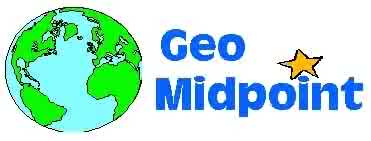
Bearing and Distance Calculator
Finds the destination point given a starting point, bearing and distance. The points can be viewed on a Google map. Uses the WGS84 ellipsoide for greater worldwide accuracy.
Notice
The "Search for place" and Google maps are no longer available on this webpage. You can still calculate bearing and distance coordinates by typing in latitude and longitude. You can find latitude and longitude at Geocode Finder
Calculator features
You can enter a latitude and longitude directly or use the handy 'Search for place' feature--a fast search of millions of cities, towns and other places worldwide. See Help for more information.
By default, the calculator uses the WGS84 ellipsoid to find the geodetic position of the destination point, which is used by GPS devices because it provides a good approximation for the shape of the earth. Eleven other commonly used reference ellipsoids are also provided as well as a user defined ellipsoid and a spherical earth model. Calculations are made using Vincenty's formula for direct azimuth and distance which yields a high degree of accuracy for the ellipsoid models.
The shape of the earth
The earth is not a true sphere but rather an oblate ellipsoid (sometimes called an oblate spheroid) with the poles being slightly flattened and the equatorial regions being slightly bulged out. The earth would be nearly spherical if it were stationary, but because it rotates, the centripetel force of its rotation causes the equatorial regions to bulge out.
The earth's polar flattening is about 1 part in 298, resulting in an equatorial radius of 3963.191 miles (6378.137 km) and a polar radius of 3949.903 miles (6356.7523 km). The polar flattening is so slight that it would be hard to detect with the human eye alone, however, it does make a significant difference when calculating long distances on the surface of the earth.
Reference ellipsoids
Once it was realized that the earth was not a true sphere, geodesists and cartographers began to look for a more precise earth model that would lead to improvements in navigation, the location of points on the earth's surface and the measurement of the geodetic distance (the shortest line that can be drawn between two points on the surface of the ellipsoidal earth).
However, in those days the true size of the earth was not precisely known, so different reference ellipsoids based on local survey data were developed that provided a good fit for a particular region. These ellipsoids were named for the person who developed the ellipsoid such as Clarke, Bessel, or a region such as Australian, South American etc.
A true worldwide earth model became possible in the second half of the 20th century with the launching of military and civilian satellites which were able to determine the size and shape of the earth with much greater accuracy. This has led to the current standard WGS84 ellipsoid which is being adopted by more and more countries. Note that the WGS84 and the GRS80 ellipsoids are virtually identical except for a small rounding difference.
Other free online tools by GeoMidpoint
Geographic Midpoint Calculator
Visit the Geographic Midpoint Calculator. With this tool you can:
- Select all cities and towns that you have lived in then view a Google map with a marker showing you exactly where your average location is.
- Find the midpoint of a flight between two cities and more.
Random Point Generator
The Random Point Generator generates one or more points at random locations on the surface of the earth. You can throw one or more virtual darts at a Google map and see where they land at.
Let's meet in the middle
This free tool finds the ideal restaurant or other point of interest halfway between two or more addresses. Meet your friend or business acquaintance for lunch.
Contact and miscellaneous
GeoMidpoint is asking you to Link to us on a web page or blog. Thank you.